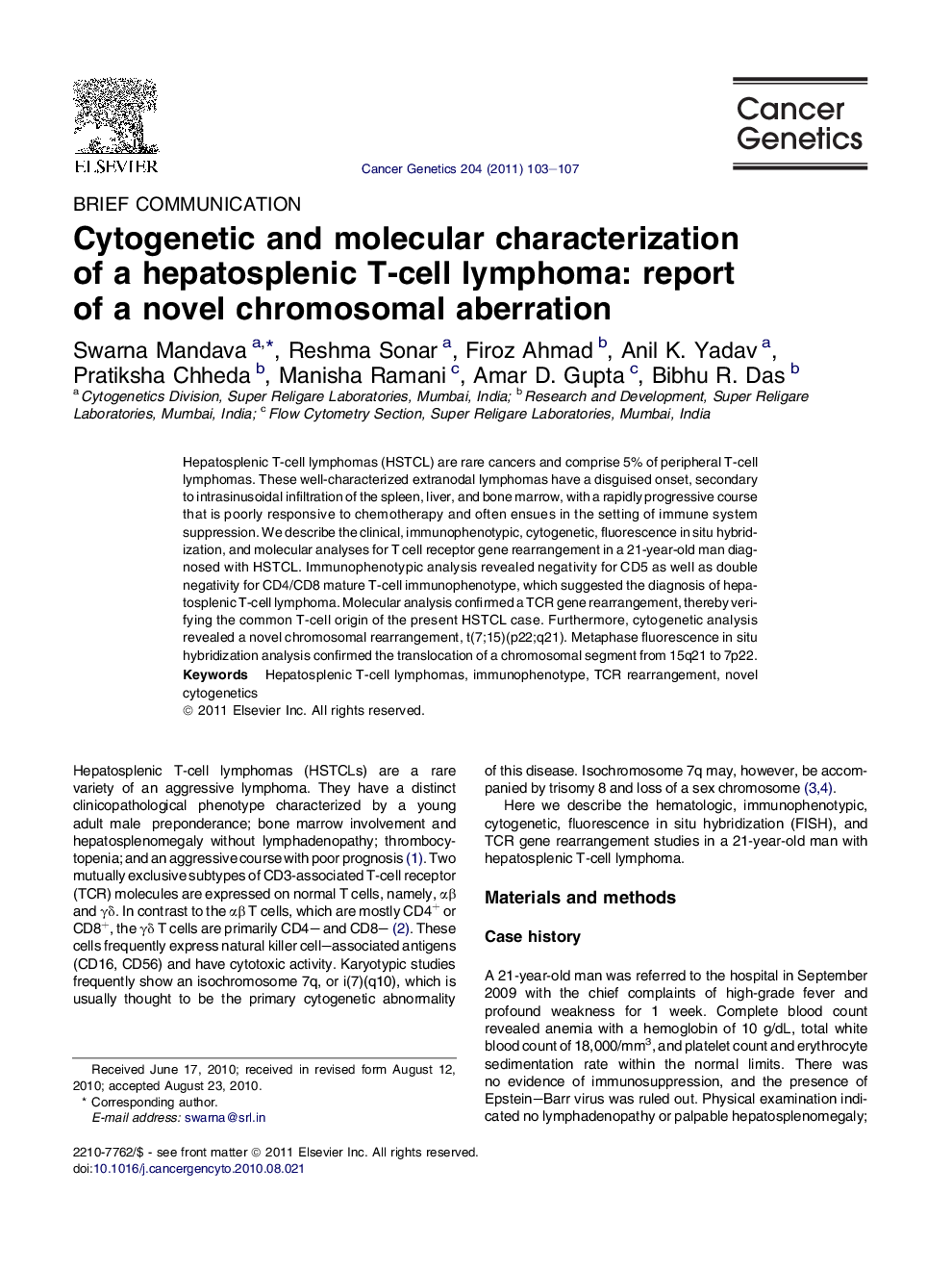| Article ID | Journal | Published Year | Pages | File Type |
|---|---|---|---|---|
| 10897661 | Cancer Genetics | 2011 | 5 Pages |
Abstract
Hepatosplenic T-cell lymphomas (HSTCL) are rare cancers and comprise 5% of peripheral T-cell lymphomas. These well-characterized extranodal lymphomas have a disguised onset, secondary to intrasinusoidal infiltration of the spleen, liver, and bone marrow, with a rapidly progressive course that is poorly responsive to chemotherapy and often ensues in the setting of immune system suppression. We describe the clinical, immunophenotypic, cytogenetic, fluorescence in situ hybridization, and molecular analyses for T cell receptor gene rearrangement in a 21-year-old man diagnosed with HSTCL. Immunophenotypic analysis revealed negativity for CD5 as well as double negativity for CD4/CD8 mature T-cell immunophenotype, which suggested the diagnosis of hepatosplenic T-cell lymphoma. Molecular analysis confirmed a TCR gene rearrangement, thereby verifying the common T-cell origin of the present HSTCL case. Furthermore, cytogenetic analysis revealed a novel chromosomal rearrangement, t(7;15)(p22;q21). Metaphase fluorescence in situ hybridization analysis confirmed the translocation of a chromosomal segment from 15q21 to 7p22.
Keywords
Related Topics
Life Sciences
Biochemistry, Genetics and Molecular Biology
Cancer Research
Authors
Swarna Mandava, Reshma Sonar, Firoz Ahmad, Anil K. Yadav, Pratiksha Chheda, Manisha Ramani, Amar D. Gupta, Bibhu R. Das,
